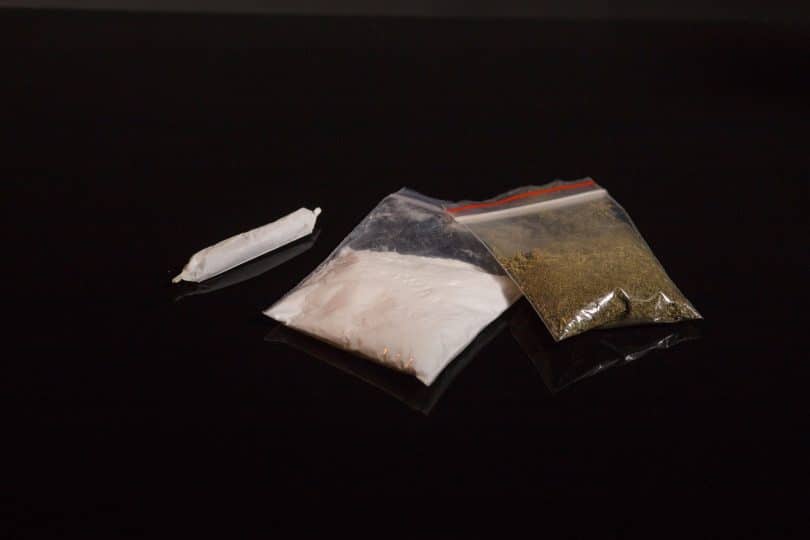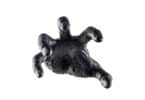If you read the headline and think that’s not possible, it absolutely is. In fact, it’s right out there in our faces, in that methamphetamine is scheduled in the Controlled Substances list at a more accessible level. Which makes meth more legal than cannabis in the US. And beyond. Why is this the case? And what is meth legal for?
First, a little about methamphetamine
Methamphetamine goes by several names on the street, like ‘meth’, ‘ice’, ‘crank’, ‘crystal’, ‘yaba’, ‘glass’, ‘tina’, ‘tweak’, and ‘T’. It’s classed as a stimulant drug, much like amphetamine and cocaine. It’s also considered a psychostimulant for its psychoactive effects along with stimulatory effects. Its an agonist for the neurotransmitters dopamine, serotonin, and norepinephrine. A high can last from 8-10 hours from the come-up to the come-down, with after effects lasting as long as a full day.
As a stimulant it makes a person feel more awake and energetic. It increases motivation and the ability to keep going. It suppresses the appetite, can increase sex drive, and creates feelings of euphoria. As a stimulant, it can also come with negative effects for the wrong person, or when taken at too-high doses. This includes feelings of anxiety and paranoia, disorganized thinking and delusional thoughts, violence, and psychosis.
Chronic users often experience quick and unpredictable mood swings, and increases in the above mentioned paranoia, stimulant psychosis, and violent behavior. It can also cause hallucinations (like bugs on the skin), and delirium. Meth comes as either a white-to-blueish crystal (which looks like actual crystals, or shards of ice or glass), or is ground into a powder. It’s smoked in specific glass pipes, or through straws; snorted; injected; and medically taken as a pill.
Thanks for stopping over. Sign up for the Cannadelics Weekly Newsletter to get email updates; and also get access to a range of deals on cannabis flowers, vapes, edibles, smoking devices, cannabinoid compounds (like delta-8), amanita mushroom products, and tons more. Let’s all get chilled the right way!
The intense feelings of euphoria make it a highly abused drug. And frequent use can cause dependence whereby the user experiences feelings of withdrawal when stopping. Withdrawal can include post-acute withdrawal symptoms, which means experiencing ongoing symptoms that resemble a mental illness, that can go on for quite some time. Often users go on binges whereby they take the drug continuously for many days (tweaking), generally without sleep; which can cause its own set of symptoms from sleep deprivation.
Methamphetamine is generally bad for the brain. It’s considered a neurotoxin, which causes damage to dopaminergic neurons of the midbrain when taken in high doses. Neurotoxicity from the drug can result in negative changes to the structure and functioning of the brain. This includes a reduction in grey matter (“neural cell bodies, axon terminals, and dendrites, as well as all nerve synapses”) in different parts, as well as negatively affecting markers of metabolic function. It can also promote the breakdown of skeletal muscles, create bleeding in the brain, and cause seizures.
It was first synthesized in 1893 by Japanese chemist Nagayoshi Nagai, from the drug ephedrine. To get a bit technical, meth exists as two enantiomers, which means it’s a compound with two mirror image sides. One is levomethamphetamine, and the other side is dextromethamphetamine. This is similar to ketamine, which exists as S-ketamine, and R-Ketamine, with the two together forming racemic ketamine. Methamphetamine is the racemic free base form, consisting of equal amounts of both sides.
How did methamphetamine use start?
We really don’t hear much about medical uses of methamphetamine, but they exist, and have for quite some time. Though it was first synthesized in 1893, it didn’t have its first medical use until WWII. During this time it was used along with amphetamine, by both Allied and Axis forces, in order to increase performance in war.
It was marketed in Germany starting in 1938 under the name Pervitin, made by the pharmaceutical company Temmler. Though it was non-prescription at the time, following its use by soldiers, and the realization of its addictive abilities, it was made a prescription drug in the country in 1941. Soldiers were still given the drug, but in more controlled doses.
It entered the American market in the 1950’s when the company Obetrol Pharmaceuticals released it as Obetrol, a drug which incorporated meth as a treatment for obesity. It became very popular in the 50’s and 60’s, but was forced into stricter regulation as the addictive properties became more established…something that was already technically known from the war.

In 1970, during the US’s flurry of drug illegalization measures, methamphetamine wasn’t actually illegalized, but put in the same place it still resides today, in Schedule II of the Controlled Substances list. This was done using the newly instated Controlled Substances Act. Schedule II means its considered dangerous, but with limited medical use. As in, not completely illegal.
Let’s remember, to this day, cannabis sits in Schedule I (no legal uses, considered highly dangerous) in the US. This makes meth legal for some medical purposes, whereas cannabis is legal for none (outside pharma medications that did not come with an official rescheduling of the drug). In terms of the UN, meth is in Schedule II of the Convention on Psychotropic Substances, whereas cannabis is still Schedule I, even after a recent vote re-examined the subject. So both according to the US federal government, and UN, meth has greater legality than cannabis, and cannabis is more dangerous.
How is it used today?
Methamphetamine is currently sold under the brand name Desoxyn for ADHD. It’s considered a second-line drug for that, and for treating obesity. It comes in five, 10, or 15 mg tablets, both immediate release and extended release. Desoxyn is the only FDA approved methamphetamine medication currently on the market, though it’s found as a generic drug as well. It’s also prescribed off-label for narcolepsy and idiopathic hypersomnia (excessive daytime sleepiness). Off label prescribing is perfectly legal, and is what drives the ketamine market.
Get this though, just like how one half of ketamine is marketed as S-ketamine (the other side is R-ketamine); one half of methamphetamine is also marketed as an approved drug. Its L-enantiomer side is known as levomethamphetamine, and is sold in over-the-counter nasal decongestants in the US. According to Jpain.org, it “lacks CNS activity, has a low abuse potential, and is poorly metabolized to amphetamine.” Of course, it’s also shown that users tend to like it, and can have abuse issues with it, so is it really that different in the end? Or just a way to legally market – and make money off – methamphetamine?
While this information is incredibly outdated, it was reported that at the end of 2009, a methamphetamine hydrochloride medication had brought in approximately $9.3 million for the company Mylan, according to IMS Health. Mylan is now a part of the company Viatris, and it’s unclear if that company still sells this drug. I could not find current revenue information for Desoxyn. It was originally trademarked by a Danish company, before the trademark was sold to Italian company Recordati.
How dangerous is meth?
It’s actually pretty dangerous. First off, all that stuff about delusions and psychosis and violence are a big thing. You can look in the news to find those stories, or ask around. Meth is commonly done, and finding someone with experience isn’t hard. Meth is associated with all kinds of weird behavior like repetitive motions (punding), taking things apart, and scratching at the skin until it bleeds because the user thinks something is on them (meth mites).

Beyond that, while smear campaigns on cannabis are generally completely insane when looking at the lack of death and injury, meth actually causes a lot of death and injury. Though the US doesn’t keep specifics on overdose for all drugs individually, it classes methamphetamine as a psychostimulant, and does have stats for that.
The National Institute on Drug Abuse put psychostimulant overdose deaths at 32,537 in 2021, and it’s a pretty good bet that meth is a primary source of these deaths, although it should be noted that the rise of combined opioid use with other drugs like meth could also increase numbers. It does give a separate number for cocaine, implying cocaine deaths are not a part of this. Psychostimulants are the 4th leading cause of drug-related deaths in the US, following opioids, smoking, and alcohol. But 2nd in terms of overdose deaths.
Another example comes from statistics put out by the National Institute for Health Care Management (NIHCM). According to this organization, the overdose death number regarding meth for 2020 was 23,776; although this also does not rule out inclusion of other drugs used at the same time. Regardless of whether from only meth, or with other drugs like opioids, these are not small numbers.
While most of the illicit meth in America comes from Mexico, a growing story is the rise of meth production in Myanmar. Though this has a greater effect on countries like Thailand at the moment, there’s little doubt that increased production of a drug consumed frequently in the US, will probably mean an increase in importation. The illicit meth industry is likely strengthened by the ability to make it in covert labs, whereas drugs like opium and cannabis require growing space.
All told, this drug with a large death-toll on its back, is actually more federally legal than the no death-toll drug cannabis, and the also no death-toll psychedelic drugs: magic mushrooms, LSD, and DMT. While all these reside in Schedule I (along with mescaline, which comes with a loophole which allows use), methamphetamine sits pretty in Schedule II, meaning the US government is telling us that cannabis is more dangerous than meth. What a crazy world we live in.
Conclusion
Is cannabis more dangerous than meth? No! And I can make that statement as there are death and injury statistics attached to meth, and essentially none for cannabis (possible semi-related injury numbers, but no direct death stats). So, no, it makes absolutely no sense that meth is more legal than cannabis in the US, and the world in general. Or that its scheduled as being less dangerous. And the fact that it is, is something that really should be considered.
Welcome everybody! Thank you for joining in at Cannadelics.com; a news platform with eyes on the growing cannabis and psychedelics industries of today. Read-thru frequently to remain updated on this quickly changing landscape; and subscribe to the Cannadelics Weekly Newsletter, so you’re always first to know what’s going on.









